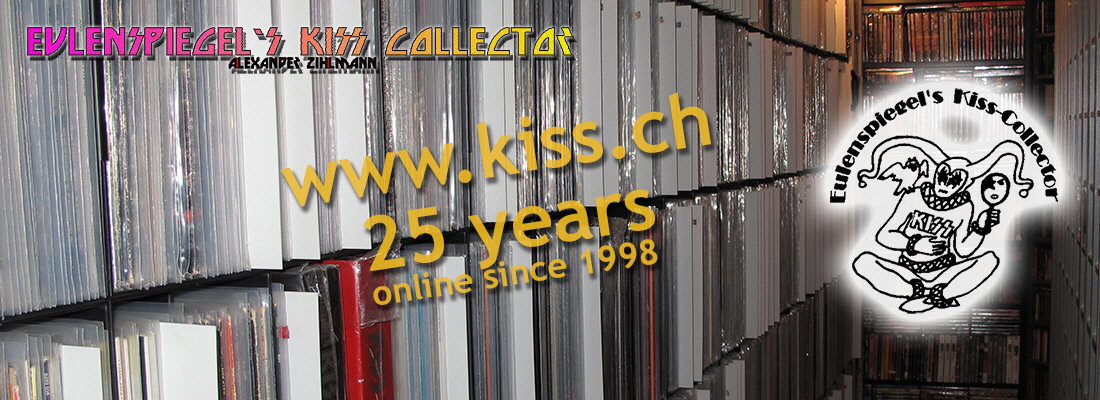Speaking about KISS US RIAA album awards there are only the following formats issued (there is also a white matte style – but these were before KISS was certified)
Floater Style
(March 1975 – December 1981)
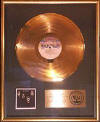
Album, Mini-Cover & Plate are separate and have a little distance from the back, so these are ‘floating’.
Strip Plate Style
(January 192 – March 1985)
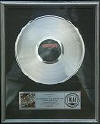
The plate also includes the mini-cover, on a ‘stripped plate’.
Hologram Style (flower hologram, 1st hologram)
(March 1985 – Fall 1989)
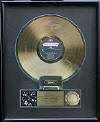
Instead of a printed RIAA logo the (round) logo is a hologram. The Award also normally includes an MC.
New Hologram Style (R-style hologram)
(Fall 1989 – 1997)
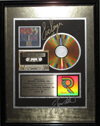
The hologram was changed to an R instead of the round logo. Meanwhile also CD was a standard-album-format. Often without a LP (so these awards were smaller).
Numbered Hologram Style
(1997 – present)
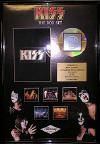
The hologram was changed again to a numbered hologram to avoid uncontrolled ‘re-issues’. Each hologram has an individual numbered hologram.
Nowadays of these awards don’t have a standard look, they often feature a picture of the artist etc. These individual arranged awards are also called custom style awards (equally which style of hologram etc.)
Un-Authorized Awards, Re-Issues, In-House, Fakes
Un-Authorized awards
These un-authorized awards were mostly made in the late 80’s in the R-Hologram. Certified award-makers just did whatever they thought they could sell – without being permitted for it. As the materials were just as with authorized awards you cannot say these are fakes as it WAS all original – except the permission. That was the most reason why RIAA changed to the numbered hologram to have full track of where each award is going to (the award-makers have to provide the list to RIAA)
Re-Issues
Each artist has the possibility to re-order awards for himself (or for charity and so on). BUT: When he re-orders an award today it’ll be the TODAYs style, equally when it was originally issued.
Let’s name a an example:
Unmasked was originally issued in floater-style. Depending on when it was re-ordered it was made always in the actual style (up to the todays numbered hologram style).
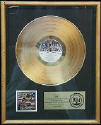

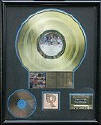
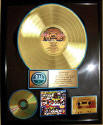
There has also to be named that there have always been several certified award-makers in the US (East coast, West coast etc.) so not all awards did look exactly the same also when they were made for the same album in the same period.
In-House-Awards
In-house awards often write about RIAA (‘to celebrate the RIAA certification of…’) but these are NOT issued by RIAA. These are made by the record companies itself to celebrate their own success. These are often given to employees because these were made in a cheap(er) style. So these are non-RIAA awards equally if they write about the RIAA certification or not. Anyway these do not pretend to be RIAA certified awards.
Fakes
Fakes are whether re-issues nor un-authorized nor in-house awards but mostly cheap made look-alikes, pretending to be original RIAA awards.
A few indications how you can spot out a fake:
- Not certified: An award that was never issued (certified) like a The Elder award or an Alive! Platinum award (Alive! was only certified gold by RIAA)
- Wrong frame: Floater or Strip Plate awards always had a gold or silver (platinum) frame, not a black frame.
- Correct vinyl. The award-makers (except for the newer awards) did NOT use the actual disc that was certified. I.e. although the certified album had 5 tracks listed on label A, the gold or platinum disc might have 4 or 6 tracks (or any other number) when you look at the visible tracks on the vinyl itself. The matrix-number does NOT fit the certified disc.
- Vinyl instead of metal stamper: Especially floater & strip-plate awards had a so-called metal stampers, it’s not a vinyl-disc but a metal-disc that was colored gold or platinum.
- Copied label: The awards do have (normally) the original labels, not a copied label (especially not inkjet/laserprints in the 70’s…)
- Copied mini-covers: Same as with the labels: Here were used mini-photos, not inkjet- or laser-prints
